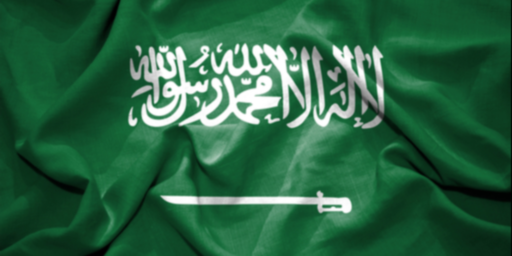Purple Heart Boulevard: Signs the Insurgency is Losing
Last September, in Baghdad’s Haifa Street neighborhood, a suicide car bomb killed approximately 50 people, many of whom were hoping to join the fledgling police force. It marked the “disintegrating state of security.”
Last month, as Major General Peter Chiarelli left for Fort Hood, he made the following statement about the same thoroughfare that has seen more than 150 Purple Hearts:
Tears of Pride, and Loss, as General Leaves Iraq (NYT)
We are turning people to our side there. We are moving southeast to northwest and we are improving electricity, sewerage and water. And as we go, the bad guys move back, and we find more and more people denouncing them.
Today, John Burns confirms the progress:
There Are Signs the Tide May Be Turning on Iraq’s Street of Fear (NYT | RSS)
In the first 18 months of the fighting, the insurgents mostly outmaneuvered the Americans along Haifa Street, showing they could carry the war to the capital’s core with something approaching impunity.
But American officers say there have been signs that the tide may be shifting. On Haifa Street, at least, insurgents are attacking in smaller numbers, and with less intensity; mortar attacks into the Green Zone have diminished sharply; major raids have uncovered large weapons caches; and some rebel leaders have been arrested or killed.
American military engineers, frustrated elsewhere by insurgent attacks, are moving ahead along Haifa Street with a $20 million program to improve electricity, sewer and other utilities. So far, none of the work sites have been attacked, although a local Shiite leader who vocally supported the American projects was assassinated on his doorstep in January.
But the change American commanders see as more promising than any other here is the deployment of large numbers of Iraqi troops. American commanders are eager to shift the fighting in Iraq to the country’s own troops, allowing American units to pull back from the cities and, eventually, to begin drawing down their 150,000 troops. Haifa Street has become an early test of that strategy.
Last month, an Iraqi brigade with two battalions garrisoned along Haifa Street became the first homegrown unit to take operational responsibility for any combat zone in Iraq. The two battalions can muster more than 2,000 soldiers, twice the size of the American cavalry battalion that has led most fighting along the street. So far, American officers say, the Iraqis have done well, withstanding insurgent attacks and conducting aggressive patrols and raids, without deserting in large numbers or hunkering down in their garrisons.
As American commanders themselves admit, “the changes are a long way from a victory.” Indeed. By the same token, it’s probably much closer than Professor Juan Cole indicated just last week.
James Joyner (0803) adds: I initially posted on this separately before realizing Robert has already covered the Burns article. I’ll simply expand on his last point here. The key appears to be the transformation of Iraqi forces into a legitimate fighting force:
When Iraqi units began to serve in combat zones, desertion rates were high. During the first offensive in Falluja, last April, some soldiers refused to fight. But over the past nine months, a $5 billion American-financed effort has bought Iraqi units more than 100,000 Kalashnikov rifles, 100,000 flak jackets, 110,000 pistols, 6,000 cars and pickup trucks, and 230 million rounds of ammunition. In place of the single Iraqi battalion trained last June, there are more than 90 battalions now, totaling about 60,000 army and special police troops. No one is certain how many insurgents they face; the number, including foot soldiers, safe-house operators, organizers and financiers, is estimated to be 12,000 to 20,000.
Iraqi units still complain about unequal equipment, particularly the lack of the heavy armor the Americans use, like Bradley fighting vehicles and Abrams tanks. But the complaints among American officers about “tiny heart syndrome” – a caustic reference to some Iraqi units’ unwillingness to expose themselves to combat – have diminished. “Now, they’re ready to fight,” said Lt. Gen. David H. Petraeus, the American officer overseeing the retraining effort, in a recent interview at his Green Zone headquarters.
Lethal intimidation of recruits – the suicide bombing of army barracks, police stations and recruiting lines, with scores of volunteers killed – remains the single biggest problem in building the Iraqi forces, the general acknowledged. But an overwhelming majority of new recruits have refused to buckle, he said, and they understand that they are fighting, not for the Americans, but for their own country. “Guys who get blown up in the morning get themselves bandaged up, and they’re back in the afternoon,” he said.
Impressive indeed. Creating a professional force takes time. We forget that the American military had high desertion rates during the pre-professional days, including during our War for Independence and repeatedly thereafter. Continuing to fight when someone is shooting at you goes against all human instincts, especially if one’s own family isn’t being threatened. It takes a lot of training and confidence in one’s leadership to overcome the self-preservation instinct.
I also disagree with Matt Yglesias on this:
I wonder if we aren’t due for a rhetorical flip-flop here in the USA. Doves have tended to emphasize the “bad news” out of Iraq in order to make the war look bad, while hawks have tended to emphasize the good. But insofar as you want to see the troops brought home and the occupation ended, it seems that this is the sort of news that will push the White House to start drawing our force level down. Hawks, meanwhile, who want to see some kind of massive, open-ended deployment are going to need to find bad news to point to as justification for continuing the mission. Maybe.
Who are these hawks who want to continue fighting wars once they’re won? Every serious advocate of this war I’m familiar with wants to turn a transformed Iraq over to a professionally trained Iraqi security force and pull most of our troops home. There are surely some who would like to maintain a garrison force there but few who want more than that.





A question for pro-war posters here: do you support the establishment of permanent U.S. bases in Iraq?